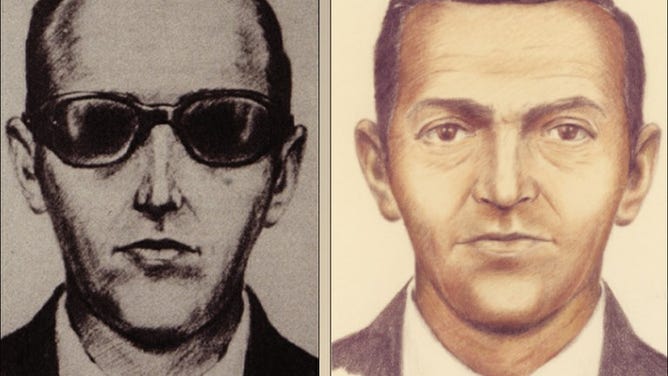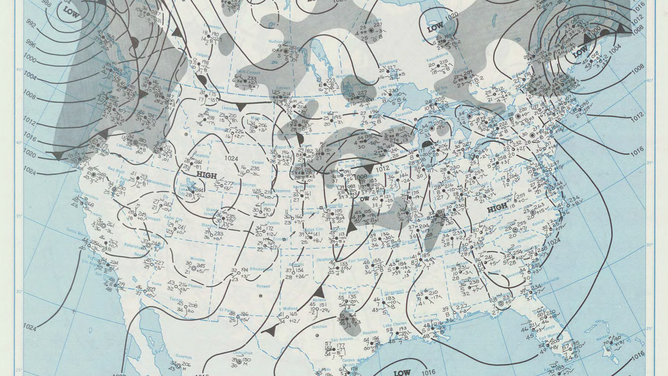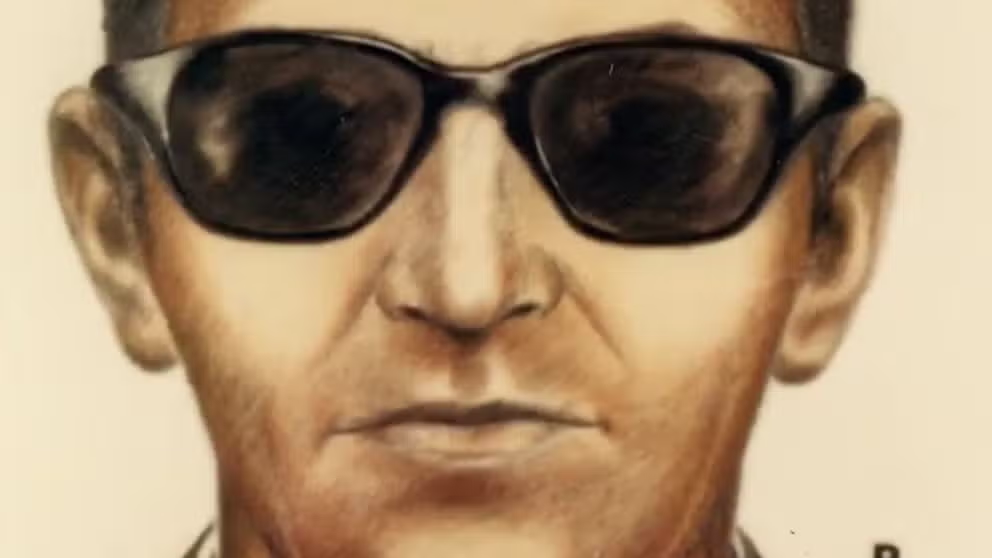D.B. Cooper expert: New evidence points to person of interest in unsolved case
An analysis of a tie left behind during the infamous hijacking over the Pacific Northwest in 1971 has led to some new clues as to the identity of the mysterious D.B. Cooper.
D.B. Cooper mystery: Did bad weather doom the heist?
Even if famous hijacker D.B. Cooper had managed to survive his harrowing jump, he would have found himself in a battle with the elements.
VANCOUVER, Wash. – A simple black necktie may be the smoking gun to solving a mystery that has fascinated the country and law enforcement officials for 50 years: Who is D.B. Cooper, and what happened to him?
On the afternoon of Nov. 24, 1971, a nondescript man calling himself Dan Cooper approached the counter of Northwest Orient Airlines in Portland, Oregon. He used cash to buy a one-way ticket on Flight #305, bound for Seattle.
Shortly after the flight took off, he slipped the stewardess a note saying that he had a bomb in his briefcase and demanded that she write down what he told her to. The stewardess made her way to the captain's cabin with Cooper's new note, which demanded four parachutes and $200,000 in $20 bills.

FBI sketch of hijacking suspect who went by "D.B. Cooper"
(FBI / FOX Weather)
When the flight landed in Seattle, Cooper exchanged the flight’s 36 passengers for the money and parachutes. Cooper kept several crew members, and the plane took off again, ordered to set a course for Mexico City.
Somewhere between Seattle and Reno, a little after 8 p.m., he jumped out of the back of the plane with a parachute and the ransom money. Cooper disappeared into the night and his ultimate fate and identity remain a mystery to this day.
WHY D.B. COOPER SHOULD HAVE CHECKED THE WEATHER BEFORE HIS INFAMOUS HIJACK HEIST
Perhaps the mystery may be another step closer to being solved.
Eric Ulis, known for his History Channel and Discovery Channel investigations on Cooper's case, said he has made a breakthrough in the investigation, according to FOX 13 Seattle. During a press conference in Vancouver on Friday, Ulis said a black tie that belonged to Cooper that he left on the plane has the answers.

Tie worn by D.B. Cooper.
(FBI / FOX Weather)
"The tie has actually given us three very important particles that I would consider very significant," Ulis said during the press conference. "It appears to be something that can amount to commercial DNA that points to a very specific company and a very specific division within the company at a very specific time."
Ulis said he analyzed 2017 lab reports that showed an abundance of unique metal particles were found on the tie. He was then able to match up just one Pennsylvania metal manufacturing company that was operational at the time that had special patents on those specific metals and alloys.
He contacted the company and looked into employees who worked there in the 1960s and 70s, and traveled to Pittsburgh where the company was based. Ulis was able to narrow it down to eight researchers working on those specific metal-type projects at the time.
HOW TO WATCH FOX WEATHER ON TV
In the press conference, Ulis said a retired company manager recently told him an employee named Vince Petersen fit the bill for D.B. Cooper’s description – and was someone who regularly traveled to the Pacific Northwest on business for the company during that time period.
Petersen died in 2002. Ulis spoke to his son, who does not believe his father is D.B. Cooper.
Weather was terrible during Cooper's escape
If Cooper had managed to survive the jump somehow, it would be a miraculous tale. First, Cooper picked a terrible day to pull off the heist. It was quite stormy in the Pacific Northwest, and Cooper made his jump several hours after sunset, falling into a heavy rain and snowstorm that frequently strike the Northwest in late November. There were thick clouds at 5,000 feet which would have obscured where he was landing.
"No experienced parachutist would have jumped in the pitch-black night, in the rain, with a 200-mile-an-hour wind in his face, wearing loafers and a trench coat. It was simply too risky," FBI Special Agent Larry Carr wrote in a 2007 case update. "He also missed that his reserve chute was only for training and had been sewn shut—something a skilled skydiver would have checked."
In all likelihood, Cooper ended up somewhere in the hilly or even mountainous terrain of southwestern Washington amid the extended rain and snowstorm. We don't know what the elevation was where Cooper landed, but weather data from Stampede Pass, which sits in the central Washington Cascades at 3,500 feet, and likely about 100-150 miles north of where Cooper ended up, registered steady snowfall on Nov. 24 and for four days after.

D.B. Cooper's suspected landing area.
(FBI / FOX Weather)
There was just an inch of snow on the ground there when dawn broke on the 24th, but by the 29th, there were 27 inches of snow with temperatures hovering in the upper 20s to near 30 through the period.
The FBI had focused on an area of lower terrain around Lake Merwin, though even that region had hills that stretched up as high as 2,000-2,500 feet in elevation. If the winds carried him farther east, elevation rapidly increases.
Data from Portland suggests the heavy precipitation did extend into southern Washington and northern Oregon. It was raining there the night of the hijacking, and over 1.50 inches of additional rain fell in Portland in the two days after, suggesting very stormy conditions in the mountains and foothills too.

Surface Chart from 4 a.m. PST on Nov. 26, 1971 shows a strong front had just passed through the Pacific Northwest on Nov. 25. .
(NOAA)
If Cooper ended up in the higher elevations, he fell into a snowstorm. If he landed in lower elevations, it was still pouring rain.
Remember, Cooper was only wearing regular shoes and a business suit – hardly survival gear for a jump into the middle of nowhere where freezing temperatures and rugged terrain await.
He was likely soaked from the jump with little-to-no prospects of warmth, fire or shelter amid a consistent rainfall and/or snowfall.
What's more, if Cooper had just waited a bit longer on the flight to make his getaway, he would have found much more tranquil weather conditions outside the Pacific Northwest.
